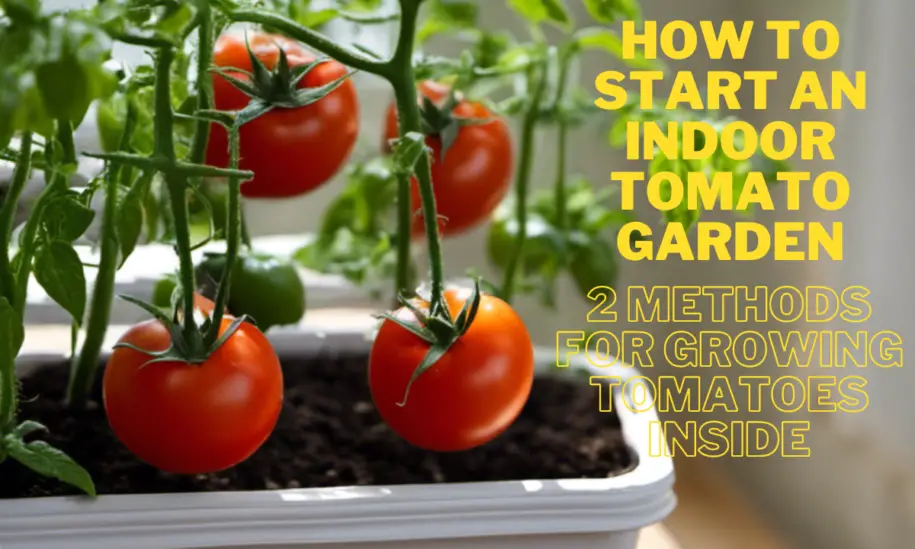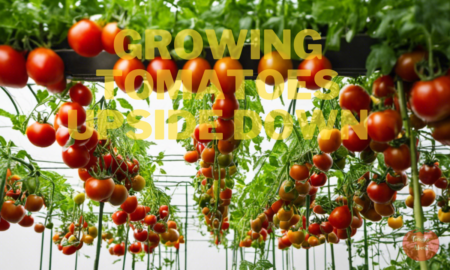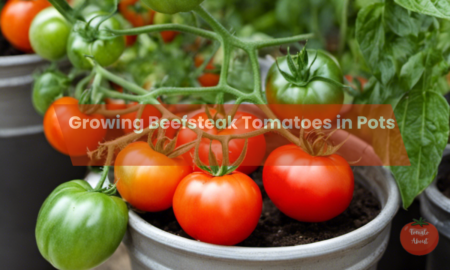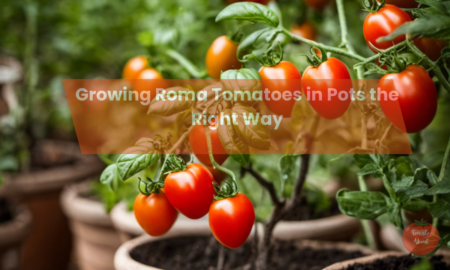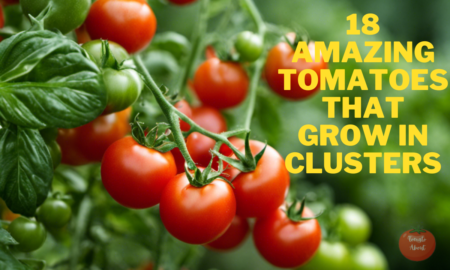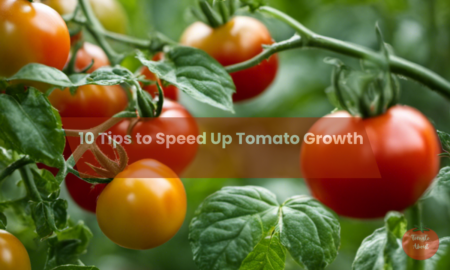Key Takeaways
- Enjoy fresh, homegrown tomatoes year-round with an indoor tomato garden, escaping weather limitations.
- Protect your plants from outdoor tomato problems like pests and diseases by keeping them indoors.
- Explore unique tomato varieties that are not commonly found in grocery stores.
- Harvest ripe tomatoes right where you cook, enhancing your meals with fresh, homegrown ingredients.
- Add beauty to your indoor space with tomato plants, which bring greenery and appealing scents to any room.
Imagine biting into a sweet, juicy tomato in the dead of winter – plucked fresh from a plant in your own home. An indoor tomato garden makes this vision a reality!
Growing tomatoes indoors lets you harvest mouthwatering ripe tomatoes, no matter the weather or season. Best of all, a few simple tricks make it easy for gardeners big and small to cultivate robust tomato plants inside.
In this complete guide, you’ll discover two straightforward methods for starting an indoor tomato garden from seed or store-bought transplants. Follow these tips and you’ll be enjoying homegrown tomatoes in no time!
Why Start an Indoor Tomato Garden?
Here are the top reasons to consider planting tomatoes inside:
- Grow fresh tomatoes year-round. An indoor garden lets you escape weather limitations and enjoy ripe tomatoes anytime.
- Avoid common outdoor tomato problems. Your plants will be protected from harsh weather, pests like hornworms, and diseases like blight when kept indoors.
- Grow rare and heirloom varieties. An indoor garden opens the door to growing unusual tomatoes you won’t find at the grocery store.
- Harvest tomatoes right where you cook. Just imagine having sun-ripened tomatoes on hand for sandwiches, pasta, and salads.
- Add beauty indoors. Tomato plants with their fuzzy leaves and yellow blooms bring attractive greenery and appealing scents into any room.
- Get a head start on spring. Begin tomatoes indoors up to 8 weeks before your outdoor planting date for earlier yields.
With the right conditions, you can produce up to 15 pounds of fruit per plant!
Choosing Tomato Varieties Suited for Indoor Growing
The key to success is selecting compact, container-friendly tomato varieties. Avoid sprawling indeterminate types that require extensive trellising.
The best varieties for indoor tomato gardens include:
- Determinate/bush tomatoes: These stocky, self-pollinating plants reach 2-4 feet tall at most. Try bush selections like Celebrity, Mountain Spring, or Bush Early Girl.
- Dwarf tomato plants: Bred for growing in pots and containers. Good options include Tiny Tim, Pixie Hybrid, Window Box Roma, Micro-Tom, and Minibel.
- Small-fruited tomatoes: Prosper in limited space. Cherry, grape, and pear tomatoes like Sungold, Sweet Million, and Red Robin are produced abundantly.
- Paste and plum tomatoes: Compact, oval-shaped fruits perfect for indoor culture. Amish Paste, Plum Regal, and Long Tom Paste are good choices.
Prioritize tastiness and disease resistance when selecting. Delicious indoor varieties include Sungold, Pink Berkeley Tie Dye, Sweet 100s, and Black Cherry.
Method 1: Starting an Indoor Tomato Garden from Seed
Growing tomatoes from seed takes time and care, but gives you more variety options. Here’s how to successfully start tomatoes from seed indoors:
Timing When to Plant Seeds
- For transplants: Start seeds inside 6-8 weeks before your expected last spring frost. This gives ample time for seedlings to mature before moving them outside.
- For indoor winter harvest: Sow seeds in late summer to grow a winter crop of tomatoes indoors.
Tomato seeds require soil temperatures around 80°F to sprout well. An indoor area that stays above 65°F is ideal.
Choosing Containers for Seed Starting
Small containers like cell packs, peat pots, or reused egg cartons work perfectly for starting seeds. Just ensure they have drainage holes. Avoid oversized containers that hold moisture for too long.
Plant 2-3 seeds in each cell or container, burying them 1⁄4 inch deep. Gently cover with seed starting mix or potting soil. Consider a soilless starting mix for better drainage.
Caring for Tomato Seedlings
- Keep soil moist but not saturated while seeds germinate. Expect sprouting in 5-10 days at optimal 75°F temperature.
- Thin down to 1 strongest seedling per cell when plants have 2-3 sets of true leaves. Snip off competitors with small scissors.
- Begin fertilizing seedlings lightly 2 weeks after sprouting using a balanced liquid fertilizer like Alaska Fish Fertilizer or FoxFarm Grow Big Liquid Concentrate.
- Ensure plants receive 14-16 hours of light daily with a grow light. Slowly rotate plants so all sides get light exposure.
- Gently blow on seedlings daily to simulate wind, which strengthens stems. Avoid direct drafts.
Transplanting Tomato Seedlings
Carefully move tomato seedlings into larger containers once they reach 5-7 inches tall. Gently tease apart tangled roots before replanting at the same level as before.
Bury any leggy stems to form stronger roots. Containers should be around 5 gallons for determinate types, and 10 gallons for indeterminates. Make sure pots have drainage.
Method 2: Planting an Indoor Tomato Garden from Transplants
Purchasing young tomato plants from a nursery provides instant gratification. Here’s how to plant an indoor tomato garden from transplants:
Selecting Strong, Healthy Tomato Transplants
Seek out stocky, compact transplants around 4-6 inches tall. Avoid leggy or rootbound plants rootbound plants which transplant poorly.
Inspect plants closely for pests like whiteflies or aphids, as well as disease symptoms like leaf spots. Only choose varieties suited to containers.
Recommended nurseries that sell quality tomato transplants include Burpee, Gurney’s, Park Seed, Territorial Seed Company, and Totally Tomatoes. You can also find a good selection at local garden centers each spring.
Preparing Containers for Transplants
Select containers in the 5-10 gallon range based on variety. Ensure pots have drainage holes to prevent soggy soil.
Self-watering planters like the EarthBoxes or window sill hydroponic planters also work beautifully for indoor tomatoes.
Use a commercial potting mix, not garden soil, which is too dense. Amend with compost or organic fertilizer like Espoma Tomato-Tone to enrich.
Planting Transplants Properly
Gently remove transplants from pots, loosen tangled roots, and plant at same level as original container.
Bury any leggy stems up to the bottom leaves to encourage roots all along the stem. Firm soil gently around each plant and water well after planting.
Helping Transplants Adjust
Place transplants out of direct sun for a few days while plants acclimate to indoor conditions.
Remove any flowers or fruits that begin developing early so plants can focus energy on getting established.
Supporting Structures for Indoor Tomato Plants
Once planted, tomatoes need support to grow upward in a tidy fashion. Try using:
- Cages like the Tomato Cage from Gardener’s Supply for containment.
- Single stakes like the J-Bravo Metal Tomato Stakes paired with plant ties.
- A DIY vertical gardening system like hanging rods or nets to train upward.
Support plants early to prevent toppling later when fruits weigh vines down.
Caring for Your Indoor Tomato Garden
With your indoor tomato garden started, here are some key care tips:
Providing Proper Sunlight
Tomatoes require a minimum of 6 hours of direct sunlight daily for ample fruit production. South-facing windows work best.
Rotate plants so all sides receive sun. Supplement natural light with grow lights like the PHILIPS LED Tomato and Vegetable Grow Light.
Watering and Humidity Needs
Check soil moisture daily, watering when the top few inches become dry. Overwatering causes issues.
Use gravel trays or terra cotta companion pots to improve drainage. Drip irrigation kits like the Melnor Hydro Automatic Watering Kit simplify watering.
Mist leaves occasionally to boost humidity around plants. Avoid wet foliage overnight.
Fertilizing Indoor Tomato Plants
Feed plants biweekly or monthly with a water-soluble fertilizer made for tomatoes, like Miracle-Gro Tomato Plant Food.
Remove lower leaves periodically so plants channel energy to fruits above. Replacing tired potting mix mid-season also encourages growth.
Pruning and Training Techniques
Pinch off suckers for better air circulation and use ties to train vines upward.
Remove old leaves and flowers as they fade. Guide indeterminate varieties as needed, pruning to maintain your desired shape.
Preventing Pest or Disease Issues
Keep indoor temperatures above 50°F and avoid drafts on plants. Provide good ventilation.
Inspect regularly for common pests like whiteflies, aphids, or fungus gnats. Take action quickly if problems occur! Neem oil or insecticidal soap sprays are useful organic treatments.
With attentive care, your indoor tomato garden will reward you with abundant ripe tomatoes perfect for eating fresh or incorporating into recipes. Have fun harvesting!
Enjoying the Fruits of Your Labor
As fruits ripen, use pruners to carefully snip tomatoes from the vine, twisting gently to avoid damaging plants.
Let tomatoes sit at room temperature to develop full flavor. Never refrigerate fresh tomatoes!
Preserve extras by canning tomato sauce or salsa. Consider saving some seeds from your healthiest plants to start next year’s indoor garden.
With this complete guide, you now have all the tips and techniques for successfully growing tomatoes indoors from seed or transplants. Get those plants started and enjoy picking vine-ripened tomatoes – no matter the season!
Frequently Asked Questions
Q: What are the best lighting options for an indoor tomato garden?
A: The best lighting for indoor tomatoes includes south-facing windows for 6+ hours of direct sunlight daily. Supplement with grow lights like LED panels. Rotate plants for even exposure.
Q: How often should indoor tomato plants be watered?
A: Check soil daily, watering indoor tomatoes when the top few inches become dry. Overwatering can cause issues, so less is more. Drip irrigation helps provide consistent moisture.
Q: What are the signs that an indoor tomato plant is getting too much or too little water?
A: With overwatering, leaves may turn yellow or roots rot. Underwatering causes wilting, dry soil, and blossoms dropping. Learn the plant’s needs for optimal moisture.

